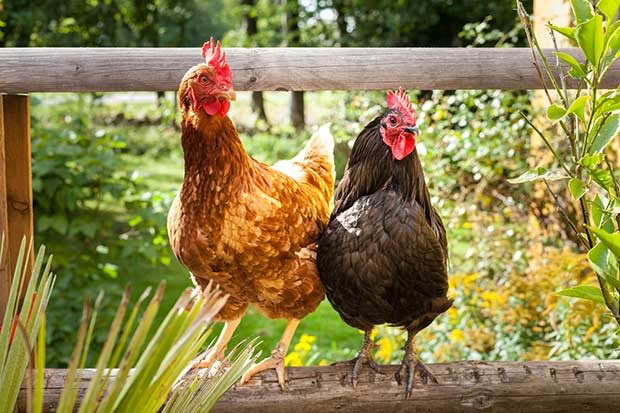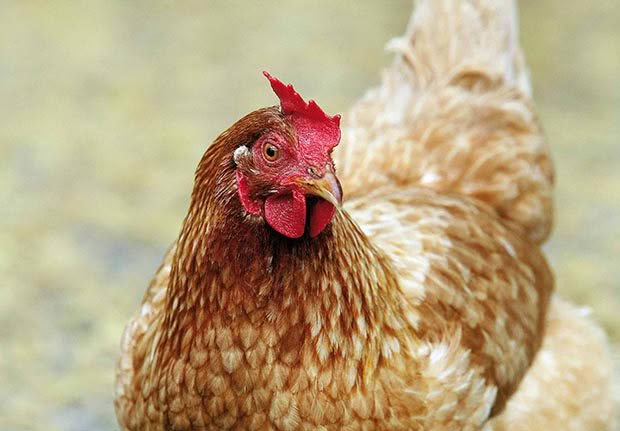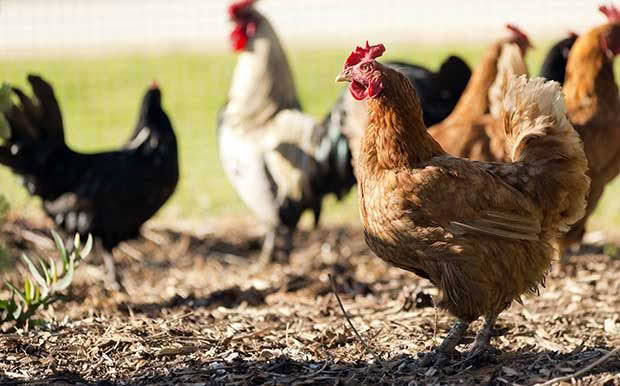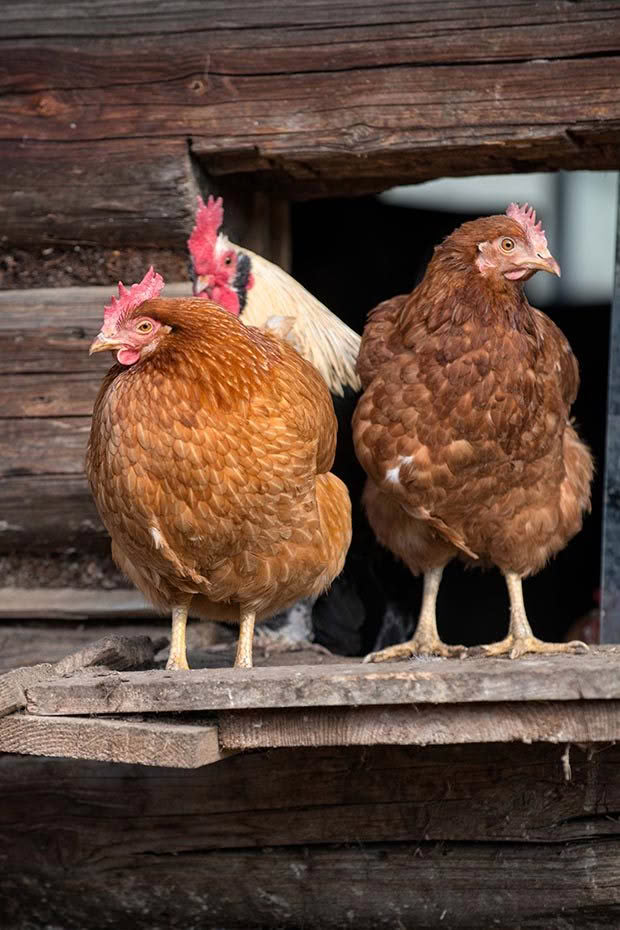Biosecurity in the backyard chicken flock: How to keep your chickens healthy when introducing new birds

What does an official-sounding word like biosecurity have to do with your small flock of chickens or ducks?
Words: Sue Clarke
I often hear about people bringing home their new hens or chicks, only for them to become sick and die – or just die – after they arrive. Often, it’s ex-cage hens that die soon after they are liberated on their new free-range home, to the distress of their rescuers.
WHY IS THIS SO COMMON?
The term biosecurity can be defined as “the formulation of a set of preventative measures and practices to prevent the transmission of harmful pathogens to or from living organisms including livestock and plants.” The chicken, with a higher body temperature than humans, is an organism ripe for the growth and proliferation of many bacteria, viruses and other pathogens like protozoa (coccidiosis) and mycoplasmas.
Poultry are also good at masking symptoms, to prevent them appearing vulnerable to others in the flock. Unfortunately, it means once symptoms become obvious, it is often too late to treat them successfully. You can rear your birds to have a good robust immune system. Resistance is developed by the birds’ exposure to small doses of all the common ailments in their environment, like how a vaccination works.

At the same time, you can keep them in the best of health by feeding a balanced diet containing all the necessary vitamins and minerals, and offer them various natural health-promoting additions like garlic, cider vinegar, and a range of beneficial herbs and plants. These won’t prevent disease but will add to the birds’ ability to resist and recover from any diseases that appear in their environment.
By far the best method of biosecurity is to keep your birds as safe from contamination from outside sources as you can. This does not have to be as extreme as practised by commercial poultry keepers, especially those producing breeding stock for future generations. These more extreme measures include changes of footwear, with designated gumboots that are never worn outside the poultry shed, or boots that are rigorously scrubbed or dipped in disinfectant before and after entry. Others use disposable overshoes to cover footwear when going inside the poultry shed.
These methods work two ways, preventing infective organisms getting in and also, should a disease occur, preventing it getting out so it won’t contaminate other areas. Staff also wear protective overalls, disposable hats, and with the most valuable livestock operations, must take a full head-to-toe shower before they can enter a shed. You don’t need to go to these extreme lengths because the value of the birds is far less. It’s not a matter of losing your livelihood should your birds get sick and die. However, the same risks to the health of your birds still apply.
Your own home-bred birds may have immunity to the pathogens in your unique environment, but you won’t have every infective organism on your block. When new birds are introduced, they will have grown up surrounded by a completely different set of pathogens. You risk introducing these diseases to your birds and making them sick. The new birds will also come in contact a new set of bugs. This can result in some or all your new birds and/or members of your established flock dying off.

It’s particularly a risk for ex-battery cage hens. These birds don’t develop much immunity at all to anything. They may arrive on your block and have to deal with a drastic change in temperature (from inside a warm shed to cooler free-range conditions). They may be in poor condition, possibly with very few feathers (as they will be close to a moult). But worse, they have had had absolutely no previous contact with the ground/soil and so no immunity to a wide range of parasites, from coccidiosis to blackhead and other types of worms.
These birds are often the first to die. Some people may put this down to ‘ill treatment’ on the previous laying farm, but the birds’ demise is often due to: the stress of the move; the change in feed and temperature; and their low immune status to all the bugs they encounter once they are in a new environment. Immunity is acquired by gradual introduction, not by sudden shock overdose.
9 WAYS TO KEEP YOUR NEW BIRDS HEALTHY
1. It’s important isolate new birds from your main flock for a couple of weeks. Have them in a separate quarantine area, as clean as you can make it from contamination, and well away from your other birds.
2. Feed and attend to the new birds after you have attended to your main flock. If the new birds have brought in anything new, this step protects your flock. Also, by attending to them last, you bring in a small amount of the resident ‘bug’ population on your hands, hair, clothes and shoes, gradually introducing the new arrivals to what they will meet once they are introduced to the main flock.
3. It takes 2-3 weeks to acquire an immunity to a low level of a new infection, just as it takes around two weeks for immunity to build up following a vaccination.
4. Think about what footwear you wear when moving around your birds, especially around their house and feeding area. Your footwear is probably the biggest source of infection, transporting bugs in the muck contained in the tread from one place to another. Ideally, wear boots specifically for feeding the hens, and clean them thoroughly each time.
5. Do not wear the same boots to visit a neighbour’s chicken run, or to go traipsing through the duck poo at the park or down by the creek, or even to visit the local poultry show. Even walking through your local farm store, feed merchant or sale yards, where someone else with a flock has walked before in their mucky boots, can be a risk. The muck you gather can drop off once you get home and be a source of new, unwelcome bugs to your birds.
6. Buy a good pair of gumboots with as little tread as possible so it’s easy to scrub them clean, and always dunk them in a disinfectant like Virkon S afterwards. You can’t decontaminate dirt with disinfectant so the boots must be scrubbed clean first.
7. The bottoms of buckets, forks and shovels may also carry contamination. That’s not so bad within your own flock, but it pays to make sure these things are clean if you have lots of young birds. Visit chicks and young birds first, before you go into a run with adult birds.
8. Don’t re-use equipment like buckets, or the brush that you use for cleaning, between new or young birds and your main flock.
9. Wild birds, rodents and other livestock can be carriers of diseases which may not affect that species but will infect poultry. Set traps for rats, stoats and mice as populations can escalate with the ready availability of food. Pick up uneaten scraps of food which can attract vermin, endeavour to keep sparrows and other birds out of feeders by having them closed when not in use, or keep them in a sparrow-proof shed (feed hens inside).

KNOW THE BIG 3
The threat of an exotic poultry disease spreading rapidly through the New Zealand poultry flock is ever present. There are three major diseases that are not present in New Zealand: avian influenza infectious bursal disease.
Newcastle:
NZ is particularly lucky not to have these three diseases. Newcastle disease antibodies have been detected in penguins in the Antarctic due to their contact with rubbish (discarded imported USA chicken bones) at the US base. Commercial poultry in New Zealand are routinely tested to ensure these diseases are not present. There are also strict quarantine and import conditions imposed on imports of poultry (only as fertile eggs from certain countries) to maintain this status.

The risk of the rapid spread of any of these diseases is more likely to happen through backyard flocks because of:
• lower standards of isolation and biosecurity;
• the ready transport of infective material by wild birds;
• the possibility of smuggled eggs to introduce a ‘new’ breed;
• movement of owners and birds between small flocks and poultry show exhibits.
Also, if a commercial farmer loses a significant number of birds, they will be quick to call in the experts, get post mortems and blood tests, get a diagnosis, and undertake treatment or further action. This will be done very quickly.
Unfortunately, it’s usually not until quite a high percentage of birds are sick or have died that a small flock owner will look for help. Many will not have taken birds to a vet or consider (or be able to afford) to get blood tests done to get an accurate diagnosis.
Although the risk of an exotic disease is low, for the sake of your flock health, if you practice good, everyday biosecurity, you are protecting their health.
Love this story? Subscribe now!
READ MORE
The hierarchy of the chicken coop and how to stay in charge of the pecking order
What is your chicken trying to tell you? A guide to poultry signals and hen clucks and cackles
 This article first appeared in NZ Lifestyle Block Magazine.
This article first appeared in NZ Lifestyle Block Magazine.

